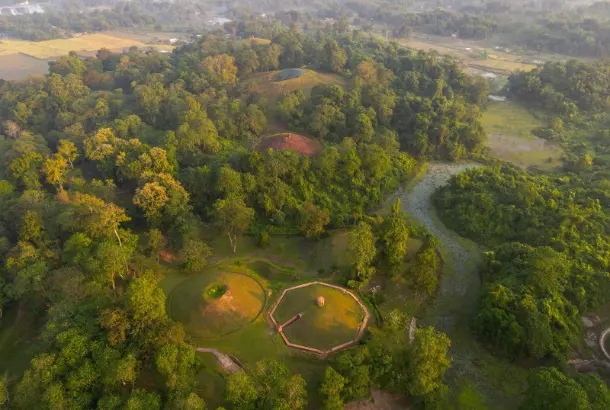Assam’s Moidams have been inscribed as the 43rd UNESCO World Heritage Site
Assam’s Moidams have been inscribed as the 43rd UNESCO World Heritage Site. This historic recognition brings global attention to the unique 700-year-old mound burial system of the Ahom Kings at Charaideo, highlighting the rich cultural heritage of Assam and Bharat. The journey of Moidams towards this prestigious recognition was spearheaded by Hon’ble Prime Minister Shri Narendra Modi, who nominated these ancient structures as India’s official entry in 2023. This nomination underscores the cultural and historical significance of the Moidams, making them the first cultural heritage site and the third overall site from the North East to be inscribed on the World Heritage list. The Moidams at Charaideo, often referred to as the ‘Pyramids of India’, are a series of grand, earthen mounds that serve as the burial sites for the Ahom royalty. These structures date back to the 13th century and showcase the intricate funerary practices and cosmological beliefs of the Tai-Ahom people. The Moidams are characterized by their hemispherical shape, brick structures, and octagonal boundary walls with arched gateways. The vaults contain the remains of the royals along with grave goods, symbolizing their stature and reverence in society. The inclusion of Moidams in the UNESCO World Heritage List is a testament to their outstanding universal value. The International Council on Monuments and Sites (ICOMOS) highlighted the Moidams’ exceptional testimony to a cultural tradition and their representation of significant stages in human history. This recognition underscores the efforts of the Archaeological Survey of India (ASI) and the Assam government in preserving these historic treasures. As we celebrate this achievement, it is essential to encourage visitors to explore the beauty and historical significance of the Moidams. Visiting Charaideo offers a glimpse into the region’s opulent history and the grandeur of the Ahom dynasty. Tourists can marvel at the architectural brilliance and the meticulous preservation efforts that have kept these structures intact. Additionally, it is crucial to promote the preservation of such monuments, which are abundant in India. The Moidams’ recognition as a UNESCO World Heritage Site serves as a reminder of the importance of conserving our cultural heritage for future generations. By visiting and supporting these sites, we contribute to their preservation and the broader narrative of India’s rich and diverse history. In celebrating the Moidams, we honour the past and look forward to a future where such legacies continue to inspire and educate. Let us cherish and preserve these invaluable treasures, ensuring they remain a source of pride and knowledge for generations to come.

